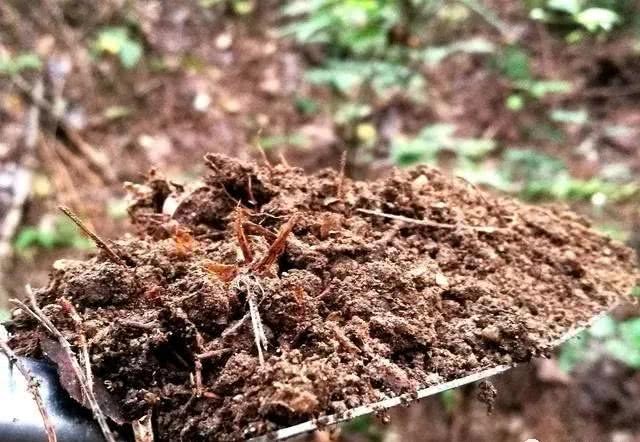Ruoge poem of beauty as well as beauty

Ruoge Crassula rogersii is a succulent plant of the family crassulaceae, which is native to a dry river valley in the Eastern Cape, South Africa. If GE Shi, the stem is erect, up to 30 cm high, easy to branch, grow a large group, the leaves are green, oval, chubby, opposite on the branches, the leaves are covered with a thin layer of white hair. In the low temperature season, under the full light, the leaf edge and even the whole leaf of Ruoge poem will turn red and very beautiful. Ruoge poem blossoms at the end of spring, but it is relatively rare, and the floret is integrated spherical and yellow.
If GE Shi planting and maintenance as a whole is not difficult, planting for a period of time will often become a large basin. Let's take a look at the Ruoge poem in its state, which is very popular.
Growth habits:
Ruogeshi likes a warm, dry and sunny environment. Afraid of low temperature and frost and snow, resistant to semi-overcast. The requirement of soil is not strict, it is better to use peat soil and coarse sand. The winter temperature is not lower than 5 ℃.
Daily maintenance:
1. Proper watering. Everyone knows that the growth of succulent plants must be watered less, so when we water Ruogeshi, we must make the pot soil completely dry, and when we water it, we must water it all at once. Don't rush to put it in the sun after watering. This will raise the temperature of the water and hurt the roots. We should put someone's Ruoge poem in a ventilated place to let the water in the basin dry and reduce the stagnant water in the basin. This is the right way.
2. Keep the temperature. Succulent plants are more dangerous in summer and winter, because if the temperature is too high, it will dormancy, and if the temperature is too low in winter, it will also dormant, so we should be more careful during this period of time. In summer, we should try to keep it in a cool and ventilated place, and in winter, uh, in a place where the sun can often shine, to increase the temperature of the growing environment.
3. The choice of soil. When we plant, we should choose those fertile and loose soil, such as those in the bog and those growing flowers and plants in the community. After meeting this requirement, there is also a good drainage. If we cannot find a soil with good drainage, we can also put some plant ash at the bottom of the basin. Soil to choose those peat soil mixed with community garden soil, this way the soil is easier to obtain, followed by better soil quality.
4. Plenty of light. Succulent plants like the sun very much. in a warm and sunny environment, Ruoge poetry will grow better, brighter and fuller, and look more transparent. However, in summer, we can't stay in high temperature for a long time, because the light is too strong and the temperature is too high, the succulent plants will be dormant. In this season, we can move the succulent plants to a cool and ventilated place. This method can reduce the growth temperature and avoid dormancy.
5. The reproduction of Ruoge poem can be divided into cuttage, leaf cutting and ramet. Ruoge poetry is mainly propagated by cuttings. generally in spring and autumn, healthy branches are selected and cut in slightly moist soil after drying. Keep cool and ventilated for about 20-25 days to take root, and the survival rate is very high. The method of ramets is to separate the tufted Ruoge poems from the mother, dry the wound slightly and plant it directly into a prepared container. Because Ruoge poetry is easy to cluster, it can be divided into plants every 2 to 3 years, and the survival rate is also very high.
The leaves of Ruogeshi are also easy to insert. Pick healthy, strong leaves and dry them in a cool and ventilated place for a few days and then put them on a wet soil surface. After a few days or weeks, they will take root or grow into small buds and grow into independent plants. When the root reaches 2~3cm, it can be planted in the pot.
- Prev

Don't fail to live up to the golden sky in late autumn
Every year at the beginning of autumn, each city will issue several ginkgo viewing strategies. Whether it is The Temple of Earth Park in Beijing, Siping Road in Shanghai, or Xuanwu Lake in Nanjing, the most pleasant promenades in many places are silhouetted against the golden sky.
- Next

When do orchids change soil? The season is important.
Orchid cultivation generally needs to change soil every other year or two. Careful orchid friends may find that a basin full of soil will slowly become shallow after a year, because some fine plants are washed away by water, and others are washed away.
Related
- Wuhan Hospital Iron Tree Blooming Result Was Instantly Frightened by the Gardener Master
- Which variety of camellia is the most fragrant and best? Which one do you like best?
- What is the small blue coat, the breeding methods and matters needing attention of the succulent plant
- Dormancy time and maintenance management of succulent plants during dormancy
- Minas succulent how to raise, Minas succulent plant pictures
- What are the varieties of winter succulent plants
- How to raise succulent plants in twelve rolls? let's take a look at some experience of breeding twelve rolls.
- Attention should be paid to water control for succulent plants during dormant period (winter and summer)
- Watering experience of twelve rolls of succulent plants
- Techniques for fertilizing succulent plants. An article will let you know how to fertilize succulent plants.

